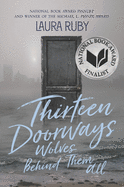
"Half-orphans" placed in the care of nuns after their mother's death, 14-year-old Frankie and her siblings eagerly await their father's biweekly visits. But when her father leaves Chicago with his new wife and takes only her brother along, Frankie "want[s] to be a boy. She want[s] to be someone somebody want[s]."
This "resigned sort of wisdom" troubles Pearl, the ghost narrating Frankie's story. Pearl watches Frankie become "both more careful and more reckless," which reminds her of her own wildness before she died of the flu in 1918, World War I's final year. "Scandalous," "shameless" and always "disheveled and damp" from adventuring, 17-year-old Pearl disgraced her family, who swore she'd scare off any husband. Pearl knew whom she wanted to marry, though: the forbidden boy willing to chase her through the woods. Out of sight of the nuns' judgmental eyes, Frankie finds the same kind of boy--one whose smile makes her feel "like a mermaid spat onto shore, half naked, tail thrashing." Pearl, even as she hopes to "become an angel" and "leave this place," sticks with Frankie through World War II, witnessing tragedies similar to those she experienced barely three decades before. As Pearl begins to question her memories of her death, Frankie is shuttled back home to her father, and both must figure out how to fit into a world that only "want[s] girls to be sorry."
Whether flouting or flaunting their sexuality, the young women in Thirteen Doorways, Wolves Behind Them All try to take control of their futures in a society bent on dictating how women should behave. With the same literary finesse exercised in her Printz-winning Bone Gap, Laura Ruby portrays women throwing open as many doors as they can, prepared to face whatever's on the other side. --Samantha Zaboski, freelance editor and reviewer

